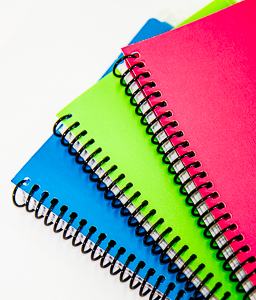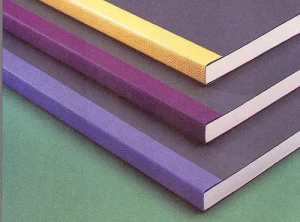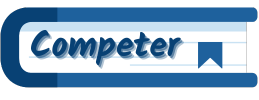
Binding Guide
At Competer, we understand that the way your study materials are bound plays a crucial role in enhancing your reading and learning experience. To help you choose the best option, we offer two types of binding: Spiral Binding and Without Spiral Binding. Each type has its own advantages, and this guide will help you understand which one suits your needs better.
1. Spiral Binding

Spiral binding, also known as spring-type binding, is a popular choice for its flexibility and convenience. In this method, a durable metal or plastic coil is inserted through small holes punched along the edge of the pages, holding them securely together.
Key Features:
Flat Laying: The book can lay completely flat when opened, making it ideal for note-taking, referencing, and studying.
360-Degree Rotation: You can flip the pages 360 degrees, allowing for easy handling and space-saving usage.
Durable and Long-Lasting: High-quality spirals ensure that the pages stay intact even with frequent use.
Best For:
Students who need to keep the book open for extended periods.
Subjects that require frequent flipping between pages, such as mathematics, science, and reference notes.
Pros:
Excellent flexibility
Convenient for studying and writingDurable for long-term use
Cons:
Slightly bulkier compared to non-spiral binding
Not ideal for stacking multiple books
2. Without Spiral Binding

Without spiral binding, also known as normal book-type binding, is the traditional method where the pages are glued or stitched together along the spine. This binding style is known for its professional and compact appearance.
Key Features:
Compact and Sleek: Provides a professional look, making it ideal for formal study materials and textbooks.
Durable Spine: The sturdy spine holds pages securely, preventing them from easily coming loose.
Easy to Stack: Ideal for organizing multiple books on a shelf.
Best For:
Formal notes and textbooks
Competitive exam books and long-term study materials
Pros:
Professional appearance
Compact and space-efficient
Great for long-term storage
Cons:
Cannot lay flat completely
Not ideal for extensive note-taking
Which Binding Should You Choose?
The choice between spiral and without spiral binding depends on your specific study habits and preferences:
Choose Spiral Binding if:
You need flexibility for note-taking.
You prefer books that can lay flat or rotate 360 degrees.
You frequently flip between pages.
Choose Without Spiral Binding if:
You want a professional, formal appearance.
You prioritize compact storage and organization.
You require long-term durability without frequent flipping.
Need More Guidance?
If you’re still unsure which binding is best for your study materials, feel free to reach out to our support team. We are here to help you choose the perfect binding option tailored to your needs!
